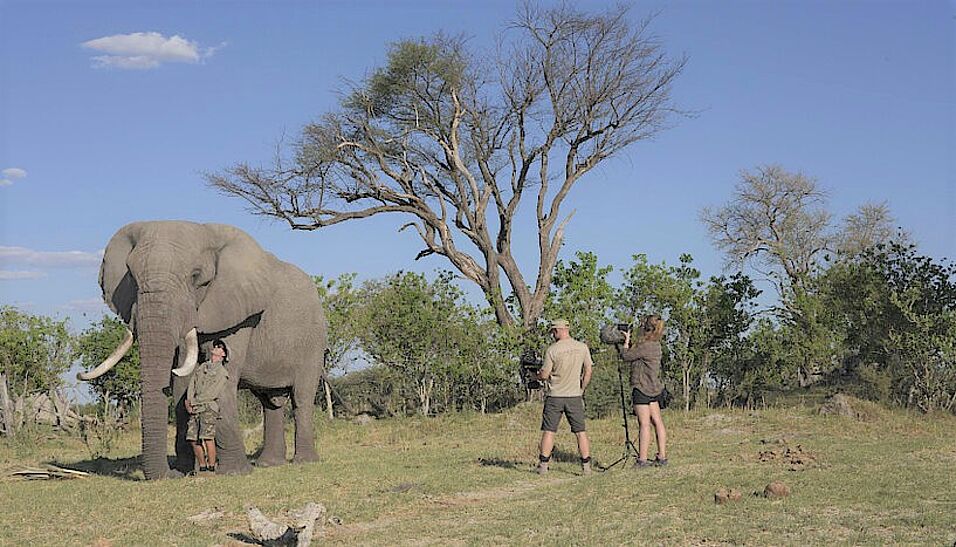Elephants are true vocal artists and very creative: The majority of sounds in African elephants are in the low-frequency infrasound range, but it also happens that they imitate or create new sounds, similar to a parrot. The current study compared the unusual sounds with data already collected since 2003. It was possible to determine: The elephants developed them anew and then presumably 'copied' them from each other. The animals also do not use their larynx to produce the sounds, but muscles of the trunk or even the mouth: they suck in air through the tip of the trunk to produce an unusually high-frequency squeak, or repeatedly contract muscles at the base of the trunk, producing pulsating sounds with a low frequency. In addition, each elephant was found to have evolved its own distinctive strategy for producing these particular sounds.
Of particular note is a very high frequency sound, a squeak, observed in Sawu, a cow elephant from Dresden Zoo, which reaches a frequency of 1800 Hz (in comparison, her low frequency rumbles are at 16 Hz). A small guinea pig squeaks at a maximum of 1500 Hz fundamental frequency. It is impossible for Sawu to produce these sounds with her massive vocal cords, so she uses her trunk to do so. In doing so, she squeezes the tip of her trunk, closes one nasal passage, sucks in air through the other, and produces her high-pitched squeaks - a previously completely unknown way of producing sound in elephants.
"We were able to show how creative elephants are in sound production and how they use their cognitive and motor flexibility to make new sounds, imitate what they hear, or modify what they already have. This ability makes elephants special: they are able to learn sounds - an ability found in only a few other animals besides us humans," says Angela Stoeger.
Imitation, but also the creation of new sounds, forms one of the foundations for the development of a language. Studying these fundamental properties in different groups of animals such as parrots, whales or elephants will also contribute to a better understanding of the evolution of human language, which is built on similar cognitive processes.
Publication in Biology:
Stoeger, A.S.; Baotic, A.; Heilmann, G. Vocal Creativity in Elephant Sound Production. Biology 2021, 10, 750. doi.org/10.3390/biology10080750
News & Events
Creative animals: elephants invent and learn unusual sounds
11.08.2021

Angela Stöger recording data in Botswana (© Natalia Cerqueira)
